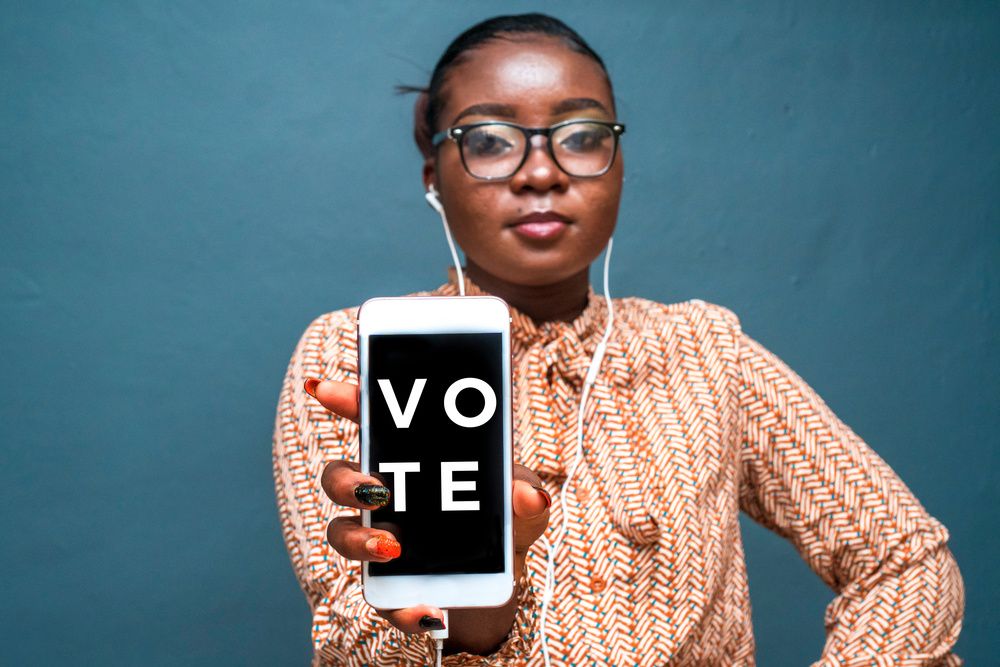The big day is coming this week, ladies. We all know the importance of having an Election Day voting plan, especially at this critical time when the nation is facing some major transitions to impact us all. If you're one of the late-comers to voting, it's OK sis. We've got you covered with this quick guide to get you on the right track. Here are 7 steps to take to cast your vote by or on Election Day:
1. Make sure you're registered.
Shutterstock
Check the National Association of the Secretaries of State's "Can I Vote" site or visit USA.gov to confirm. Voting regulations and rules vary by state so it's also a good idea to check your local or state office Websites for up-to-date information relevant to where you live.
2. Missed your state's registration deadline? Research your options.
Some states allow residents to register and vote on the same day. (Check out more information on that here, and confirm information via your local and state sites.) Also, according to the Help America Vote Act of 2002, voters who are told, at the polls, that they are not on the registered voters list can still cast a provisional ballot. Again, each locality has its own laws and regulations on how these are handled, so be sure to look into your options and ask questions accordingly.
3. Find your polling location.
Shutterstock
You want to be sure you're at the correct poll based on where you reside and are registered. The Federal Voting Assistance Program's site offers a listing to find out where you should go to cast your vote in person.
4. If voting by mail, get your ballot postmarked as soon as possible.
(Many of the deadlines for absentee ballots have passed, but some have not, so look up the deadlines for your state. Also, if you're a first-time voter, some states have stipulations on absentee ballots. You can check your options here.)
For mail-in ballots, most states have set a Nov. 3 postmark deadline. There are fears that there will be USPS delays, so if you're still sitting on that mail-in ballot and you're reading this, get to the post office ASAP. You can also vote in-person with your mail-in ballot, or check out your options for dropping off the ballot here.
5. Do your research on candidates beyond presidential.
Shutterstock
In the current atmosphere, where many are pretty adamant about who will get their vote to become the next U.S. president, it's still important to know who you will vote for in the local and state spots (ie. the U.S. Congress as well as your state legislators). These officials make important decisions that impact your daily life. You are allowed to take notes into the polling station, so jot down who you will vote for or notes on the candidates you find favorable. This will take care of the stress of it all and make remembering who you'll vote for a cinch. You can research who's on the ballot for your community here or here.
6. Make sure you have proper documentation.
Most states require a government-issued ID, but the rules on the type can vary from state to state. For example, some allow non-photo identification (such as a birth certificate) while others mandate a driver's license or passport. You can find out the documentation rules of your state via its respective election site. (Try the NCSL site to find your state's election site to confirm requirements.) For more information on voter ID regulations and rules, visit Vote.org and be sure to know the respective laws in regard to IDs, especially if you're in the military, are disabled, or you're currently overseas.
7. If voting in person, plan for Election Day essentials.
Shutterstock
Pack those snacks and water, a mask (or two), hand sanitizer, and any other item that might make a wait in line much more tolerable. Also, it might be a good idea to even bring a foldable chair or stool to sit on. Wear comfortable clothing and shoes, and prepare for the weather. Plan your day accordingly, including ensuring you've scheduled out time from work or set-up proper childcare. Many states include legal provisions for taking time off from work to vote, so be diligent in finding out the policies for requesting leave to vote. It might even be a good idea to go in a pair or group (keeping to the six-feet social distancing rule of course.)
Are you a member of our insiders squad? Join us in the xoTribe Members Community today!
Featured image by Shutterstock
- Where Kamala Harris Stands On The Issues - xoNecole: Women's ... ›
- Everything You Need To Know About Kamala Harris: The Black ... ›
- When We All Vote - xoNecole: Women's Interest, Love, Wellness ... ›
- Make a Plan to Vote - Education Votes ›
- October is Voter Education Month. Make Your 2020 Voting Plan ... ›
- MAKE A PLAN - Vote Save America ›
- Create Your Safe Voting Plan | Clerk's Office, City of Madison ... ›
- Making a Voting Plan: All Your Questions, Answered | Entertainment ... ›
- PLAN YOUR VOTE: Details and deadlines to vote, based on the ... ›
- Create a voting plan ›
- Planning your vote: What it actually means - Vox ›
- Everything You Need to Vote - Vote.org ›
